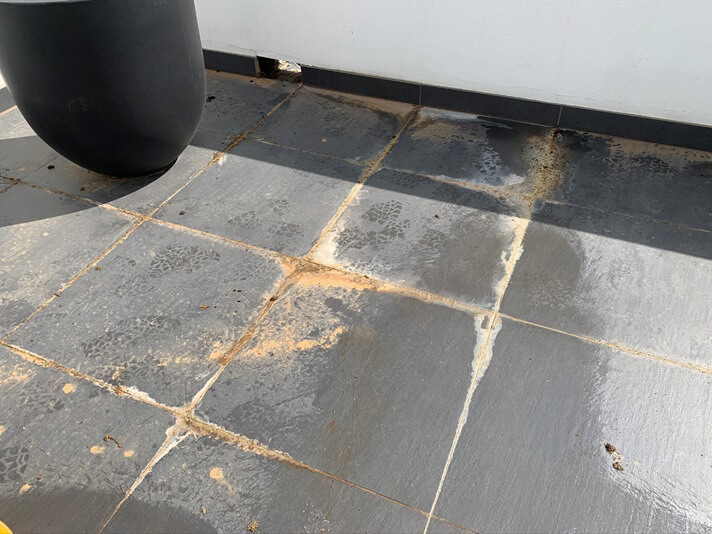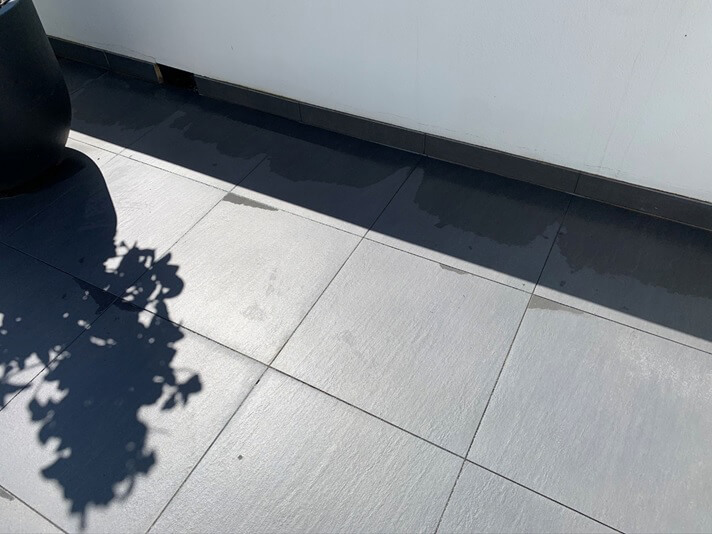Overview
Efflorescence cleaning is a specialised process designed to remove efflorescence, a common issue that occurs on various surfaces, particularly masonry, concrete, and natural stone. Efflorescence refers to the white, powdery substance that forms on the surface when water-soluble salts migrate to the surface and react with the air.
Efflorescence can be unsightly, negatively affecting the appearance of structures and surfaces. It often occurs due to excessive moisture, poor drainage, or water infiltration, which leads to the accumulation of salts within the porous materials. Cleaning efflorescence requires a combination of knowledge, expertise, and suitable cleaning techniques to restore the affected surfaces to their original condition.
Efflorescence cleaning typically begins with a thorough assessment of the affected area. Professional cleaners examine the type of surface, the severity of the efflorescence, and the underlying causes to determine the most effective cleaning approach. They may also evaluate the surrounding environment and take steps to address any moisture-related issues.


Before
After
The cleaning process often involves several steps. Initially, cleaners remove loose debris, dirt, and other contaminants from the surface using brushes or compressed air. This step is crucial to ensure that the subsequent cleaning agents can penetrate effectively and provide optimal results.
Next, specialised efflorescence cleaning solutions or poultices are applied to the affected areas. These solutions are formulated to dissolve and extract the salts that have accumulated on the surface. The cleaning agents may vary depending on the type of surface being treated and the severity of the efflorescence.s
Once the cleaning solution is applied, it is allowed to dwell for a specific period to allow for chemical reactions and breakdown of the efflorescence. In some cases, agitation techniques such as brushing or scrubbing may be employed to aid in the removal process.
After the dwell time, the cleaning solution is rinsed away using low-pressure water or steam cleaning equipment. Care is taken to ensure that the rinsing process does not cause further damage to the surface or lead to additional moisture-related issues. The surface is then thoroughly dried to prevent the reoccurrence of efflorescence.
Efflorescence cleaning should be performed by trained professionals who have experience in dealing with different types of surfaces and efflorescence-related issues. They possess the necessary knowledge, skills, and tools to effectively identify the causes of efflorescence and employ appropriate cleaning techniques to restore surfaces to their original condition.
By removing efflorescence, the cleaning process not only enhances the visual appeal of surfaces but also helps prevent further damage caused by the accumulation of salts. It is important to address efflorescence promptly and employ preventive measures, such as improving drainage and managing moisture, to minimise its recurrence in the future.
Frequently Asked Questions
Efflorescence refers to the white, powdery substance that forms on the surface of masonry, concrete, and natural stone due to the migration of water-soluble salts to the surface.
Efflorescence is considered a problem because it can negatively affect the appearance of surfaces, making them look unsightly and potentially diminishing their aesthetic appeal. It may also indicate underlying moisture-related issues that can lead to structural damage if left unaddressed.
Yes, efflorescence can be removed through a specialised cleaning process. Efflorescence cleaning involves the use of appropriate cleaning solutions and techniques to dissolve and extract the salts from the surface, restoring its original condition.
While there are DIY efflorescence cleaning products available, it is often recommended to seek professional help for efficient and effective removal. Professionals have the knowledge, experience, and proper equipment to identify the causes of efflorescence, choose the right cleaning solutions, and prevent further damage to the surface.
The duration of efflorescence cleaning depends on several factors, including the severity of the efflorescence, the size of the affected area, and the type of surface. In general, it can take a few hours to a few days to complete the cleaning process.
Efflorescence can reoccur if the underlying moisture issues are not properly addressed. However, professional cleaners can provide recommendations to mitigate future occurrences, such as improving drainage, sealing the surface, or addressing any water infiltration problems (grout damage)
Yes, there are preventive measures that can help minimise the occurrence of efflorescence. These include ensuring proper surface drainage, addressing water infiltration issues, using appropriate sealants, and controlling moisture levels in the surrounding environment.
When performed by trained professionals using appropriate techniques and cleaning solutions, efflorescence cleaning should not cause damage to the surface. However, it is essential to choose experienced cleaners who understand the specific requirements of different surfaces and employ the correct methods to avoid any potential harm.
Efflorescence cleaning is typically done as needed when efflorescence becomes visible on the surface. The frequency of cleaning may depend on various factors, including the climate, surface material, and the presence of moisture-related issues.
Yes, efflorescence can indicate underlying moisture-related issues, such as poor drainage or water infiltration, which can lead to structural damage over time. It is important to address these issues to prevent further damage and ensure the long-term integrity of the surface.
